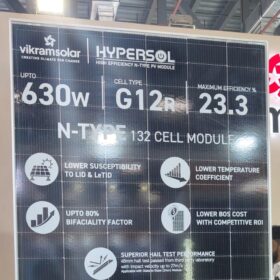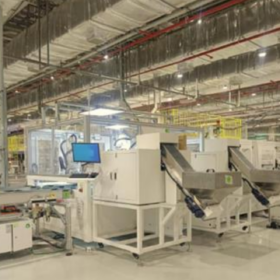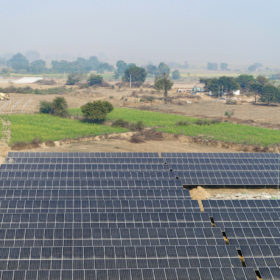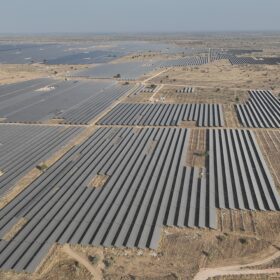According to the Ministry of New and Renewable Energy, MNRE, total installed cell and module manufacturing capacities in India total 3.1 GW and 8.8 GW, respectively. Out of that, just 1.5 GW of cell, and 2-3 GW of module manufacturing capacity is being utilized.
The following are the reasons for the poor performance of domestic manufacturing, said the ministry: The country does not have a manufacturing base for polysilicon, ingots, and wafers, i.e. the upstream stages of the solar PV manufacturing chain; there is a lack of integrated setup, economies of scale and modern technology, resulting in higher production costs; and domestic solar equipment prices are not competitive compared to those of foreign manufacturers, especially in China.
Furthermore, domestic manufacturers have to borrow loans at higher interest rates, compared to foreign manufacturers, thus pushing up their production costs. Since the assured market available to domestic manufacturers is limited, they are not able to set up larger plants, making them lose out on economies of scale. Present assured schemes under the country’s Domestic Content Requirement (DCR) schemes are not enough to be able to meet existing manufacturing capacity.
Due to bleak future prospects, manufacturers are also not motivated in ramping up their manufacturing capacities. As per the industry’s views, some of the reasons for poor manufacturing capacity are the high cost of land and electricity, low capacity utilization, the high cost of financing, and the lack of a skilled workforce.
Present support from the government
The Modified Special Incentive Package Scheme (M-SIPS) provides a subsidy for capital expenditure – 20% for investments in Special Economic Zones (SEZs) and 25% in non-SEZs. Units across the manufacturing value chain are covered under the scheme. However, the scheme is applicable for all electronics manufacturing, with no separate allocation for solar.
Around 2 GW of solar must be installed under India’s domestic content requirement (DCR) scheme. To date 1,436 has been commissioned. However, on the back of a World Trade Organization (WTO) ruling, the DCR provision has been scrapped in future tenders, which are not for Government or Public Sector Undertaking (PSU) manufacturers.
Domestic manufacturers are, thus, solely dependent upon the proposed central public sector undertakings (CPSU) scheme and the Defense scheme, which targets just 300 MW of solar. Therefore, due to the WTO ruling, several projects have been derailed.
New expected proposals
The objective of the MNRE is to eventually have the entire spectrum of manufacturing, from polysilicon to modules, located domestically. The policy proposes direct financial support of more than INR 110 billion (US$1.7 billion), and a strong, indirect support, by way of concessions. The government has proposed several components.
The first of them is the revival of the DCR through the expansion of the CPSU scheme. To the existing one GW target, an additional 12 GW has been proposed. To ensure that cheap, low-quality imports do not crowd out domestic manufacturers, the government has brought out a new quality order for solar cells and modules and is setting up procedures for quality testing.
The government is further stressing the development of upstream manufacturing. India has negligible polysilicon, wafer and cell production facilities to support its DCRs. Therefore, to encourage cell manufacturing for rooftop, in the year 2018-19, 40% of the modules under the DCR should be manufactured using domestically manufactured cells.
It is also mandated that from the year 2019-20, a minimum 20% of the DCR modules should be made from domestically manufactured wafers. And, from 2020-21, Indian polysilicon market share should be at least 20%.
A capital subsidy for new facilities and upgrades has also been proposed. Under this, Central Financial Assistance (CFA) in the form of a 30% capital subsidy should be provided for setting up and/or upgrading domestic manufacturing capacities in the country.
Moreover, the interest subvention of 3% shall be provided to manufacturers setting up new capacities of polysilicon, wafer, and cells, for loans taken through nationalized banks. The government proposed a direct support to PSU companies, subject to a maximum of 30% of the capital cost.
One of the interesting proposals, if applied, is that the capital goods required for setting up solar manufacturing facilities shall be exempt from customs duties. Other proposals, like the use of renewable power for plant production, state government support, and the setting up R&D facility, are also positive signs.
This content is protected by copyright and may not be reused. If you want to cooperate with us and would like to reuse some of our content, please contact: editors@pv-magazine.com.







By submitting this form you agree to pv magazine using your data for the purposes of publishing your comment.
Your personal data will only be disclosed or otherwise transmitted to third parties for the purposes of spam filtering or if this is necessary for technical maintenance of the website. Any other transfer to third parties will not take place unless this is justified on the basis of applicable data protection regulations or if pv magazine is legally obliged to do so.
You may revoke this consent at any time with effect for the future, in which case your personal data will be deleted immediately. Otherwise, your data will be deleted if pv magazine has processed your request or the purpose of data storage is fulfilled.
Further information on data privacy can be found in our Data Protection Policy.